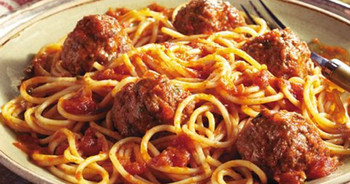
The wide range of Italian restaurants indicates how integrated they are within the dining industry. They consist of full-service establishments, pizza joints, delis, wine bars as well as espresso and gelato shops. Italian restaurants feature different prices and formality levels. These types of restaurants have been a popular fixture for several years with classic delights such as delectable spaghetti strands, sumptuous meatballs and generous servings of tomato sauces.
Different Italian Restaurants
•Enticing images of pizzas, garlic bread and tender veal are bound to excite the taste buds. Italian restaurants are associated with friendly and charming owners, enchanting music, comfortable and lively dining areas, large heaps of food and flowing wine.
•Along with the different types of gastronomical treats that come to mind when you think of Italian food, there is much more for diners to expect as restaurants continue to evolve and grow. From family owned favorites to fine-dining havens and Italian steakhouses, the options are virtually limitless.
•Italian eateries are common sights are around the country and they often serve as the initial introduction that people have to Italian cuisine. They encourage a life-long link to authentic cooking that is savored from early childhood and help to expand the palate of many diners.
Popularity of Italian Cuisine
•A significant percentage of diners identify Italian as the cuisine that is among their favorites and this has led to the development of more Italian-themed establishments that cater for the growing demand.
•Risottos and pastas are served far and wide as Italian restaurants gain popularity while becoming more diverse Far-ranging and sophisticated dining habits are comfortably accommodated by the versatility of Italian food at Upper East Side Italian Restaurant.
•Part of the growing appeal of Italian food is its excellent taste along with the price. Enjoyable and exuberant flavor are key hallmarks of the cuisine within a dining landscape that offers a typically Italian and hospitable atmosphere.
•All patrons can expect to be pleased at an establishment that ensures Italians and non-Italian customers have access to an extensive list of distinctively Italian food and infusions of international cuisine.
Universal Appeal- Italian Food for Everybody
The universal appeal of Italian food is attributed to the distinct styles of cuisine that are linked to various towns and regions of Italy. Depending on the origin, some regions are known for their stuffed pastas, cheeses and seafood while others are synonymous with their rice and butter. There is a world of delicacies available and this means that there will always be something for everyone.
Local and Fresh Ingredients
Italian food is undeniably diverse but there are some characteristics that are similar among them. These include focusing on using local and fresh ingredients. This is an essential priority that more diners appreciate as time goes on.
Maintaining Authenticity
•Italian restaurateurs effortlessly adapt to regional palates and manage to combine different dishes without compromising on authenticity.
•Various cultures have their own types of noodles but Italians stand out with their exemplary incorporation of pasta into their cuisine. Well-cooked pasta paired with a delicious sauce is a simple yet impressive combination that reflects the adaptable nature of Italian food.
•Traditionally Italian ingredients such as parsley, basil, garlic, pasta, mozzarella, tomato sauce and olive oil are some of the aspects that guarantee a memorable meal.

